Eleven Essential Tips for Designing with Lattices
rpm (rapid product manufacturing GmbH) is a highly successful Carbon Production Network (CPN) partner who has worked on hundreds of additive manufacturing (AM) projects on their Carbon printers to produce over 50,000 parts. One of the driving factors to begin with Carbon Digital Light Synthesis™ (Carbon DLS™) in 2018 was helping their customers achieve success with their lattice design parts. So they applied for and received a grant from the German government to spend 18 months researching and studying lattice designs, their production advantages, and design possibilities for use in final production products. Out of this research and development, rpm suggests these eleven essentials to consider when incorporating latticing into your design.
1. It’s not as easy as taking an existing design and clicking a button
rpm initially thought (or hoped) that lattices could be created with just a click of a button. Over the years, they have come to appreciate that each project needs to be treated as its own development project. rpm has always had co-development of projects as part of their business, but working with lattices and the Carbon DLS technology has brought product development into a more central role. This has been a positive development for the company, and rpm added resources to support customers during the design process as an alternative to their traditional focus of providing clear technical solutions to produce parts from existing customer designs. Customers work with a tag team of experts from both rpm and Carbon to create a successful design and ultimately a successful product.
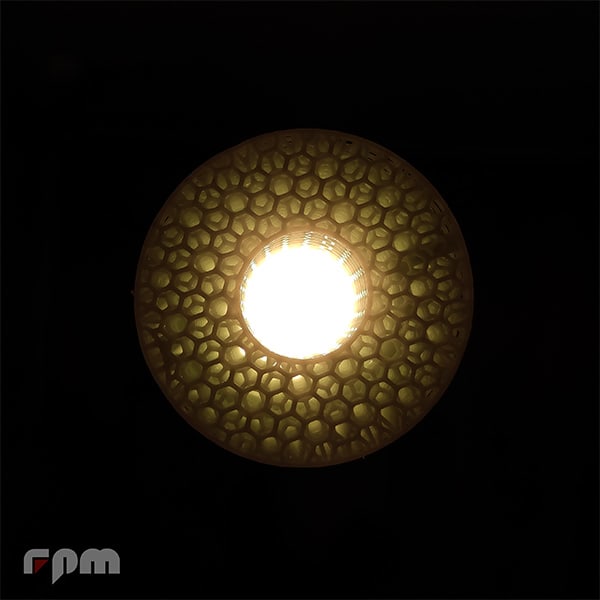
Circular lattice with inner channeling for testing mechanical properties produced as part of the German ZIM research grant (Central Innovation Program for German SMEs)
2. Consider the lattice design early and start with a discovery period
If you’re considering a lattice design, get comfortable with what different geometries and materials can do by starting with a “discovery period.” Test some sample lattice pads for a specific performance result. Ensure you are already testing with “end-application” conditions like thickness and design elements. Samples may be from a library of standard lattices or a custom, layered, or designer lattice depending on your performance needs.
Approach the project in the development stages instead of jumping straight to a technical solution. This involves static mechanical testing of tensile response, long-term testing to break, testing multiple solutions side-by-side, and creating iterative designs for testing within other components. rpm has state-of-the-art testing systems in-house, so they are well-positioned to deliver a full solution to customers.
3. Applying variable lattices provides effective performance combinations and long-term savings
Variable lattices combine multiple lattices into one design to provide different performances at different locations within the product. Carbon’s Design Engine™ software calls these lattices multi-zone, and allows you to define the lattice zones with a smooth transition between them. Carbon Design Engine’s Lattice Search feature can assist in finding the best lattice parameters with filters for performance metrics. This is where there is the most complexity at a project’s outset because performance simulation without Lattice Search is difficult. Multiple zones are also where you can find the greatest design opportunities and long-term savings for the final product. They can eliminate multiple production steps (such as combining foams) and maximize iterations during the development cycle.
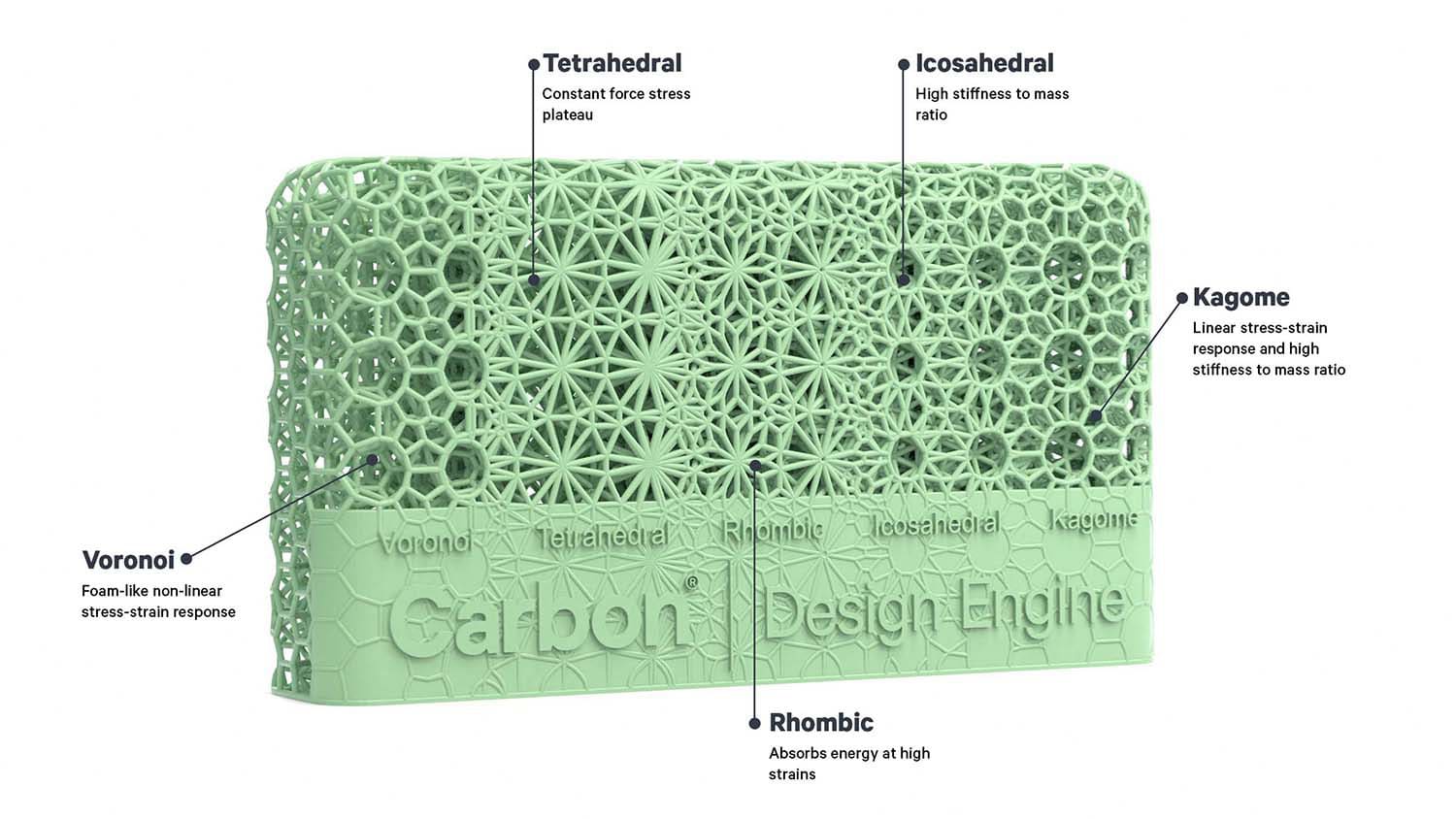
4. Consolidate multiple parts into one
One advantage of additive manufacturing is the opportunity to combine multiple mechanical properties into a single component. Lightweighting components is a clear use case that was driven by metal for many years. But for plastic parts, you can not only reduce your material use by lightweighting, but also control flexibility, compression points, and responses with both hard and soft materials by combining multiple lattice types and solid components into a single part. In Carbon Design Engine, you can use the Combine feature to layer two CAD files (one for the lattice sections and one for the solid sections) and print them at the same time.
5. Lattices are adaptable; make them work for your project
Every project will have its own goals, and there are still many exciting “low-hanging fruits” for using lattices to combine assemblies and bring additional value. For example, rpm is currently working on a project to add channels to the lattice for conveying media (air, liquid, chemicals) within functional parts. This provides multiple points of value within a single part. For these parts, having variable lattices (where the channels are protected during use) is also a key part of ensuring the final performance in the field. The first products using channeling are still in the final stages of development, but the critical production variables have been isolated and resolved so that rpm can reliably produce these next-generation products.
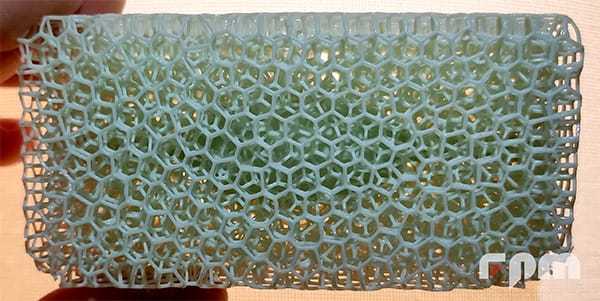
Mechanical testing pad with inner chamber to fill with liquid and water to document controlled variation within lattice structures; part of the ZIM research grant
6. Use the right combination of software tools to make your vision possible
rpm uses both the Carbon Design Engine and nTopology in tandem. The Carbon Design Engine delivers efficient, regular, conforming lattices that you can quickly implement to achieve a certain consistent mechanical response. This is particularly effective when you have a fixed design for which the feel and performance of the lattice is the primary quality driver. When rpm was part of the Carbon Design Engine Pro beta program, rpm delivered products to their customers from the consumer and industrial goods segments, which rely on different performance zones. That initially added another level of complexity to their product testing but allowed rpm to achieve a much better mechanical stress response for their customers than any other solution.
nTopology is the tool rpm turns to when it comes to variance when the final design is not fixed. A good example is rpm’s internal channels within lattice structures. rpm was able to establish design rules that automatically adjust the lattice and channeling based on the current parameter set and medium that they are testing. Then those design and production settings are ready for similar applications in next-generation products like manifolds, where a particular core geometry is established but can be produced in a variety of different iterations for specific applications.
rpm is also working closely with the Carbon Design Engine development team to automate the design adjustment of master files and the creation of predefined lattices without leaving the tool. For a couple of particular customer applications in padding, Carbon Design Engine will automatically “fit” the lattice to a final shape as defined by the customer. As a first step, this feature will be operating over the API, but based on the success of this project and additional opportunities, those tools will steadily migrate into the Carbon Design Engine directly.
7. Apply latticing using high-performance materials to deliver better products
Latticing offers an opportunity to give your end part properties that would not be possible otherwise and to improve the performance of existing “standard” parts. The latticed products that have made it to production at rpm mostly rely on concrete performance improvements using flexible lattices. Through a blend of performance zones, aesthetics, and individualization, they deliver exceptional performance and value.
The larger series volume products rpm produced using Carbon DLS were always driven by Carbon’s high-performance materials. Those materials were the key factor that drove rpm to first become a CPN. Over the years, machine reliability has become a close second, but the secure customer base comes from the material’s performance. The most successful series applications rely on one of the unique features of Carbon material technology like chemical resistance, material strength, surface quality, or production accuracy of internal and external geometries.
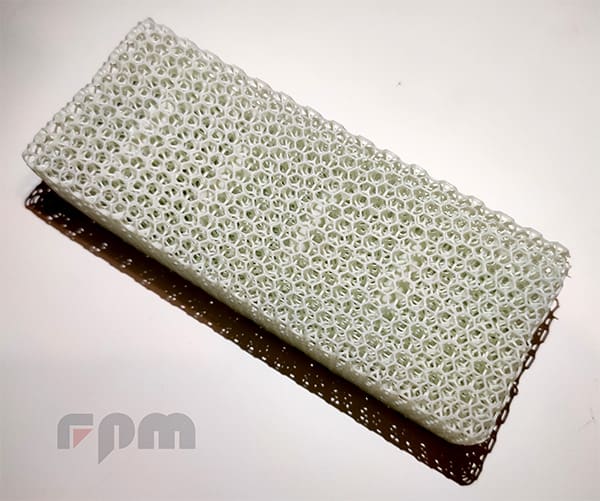
Performance testing pad with inner piping at various diameters to standardize production procedures for delivery systems within lattice structures as part of the ZIM research grant
8. Support placement is make or break for projects
Print support locations, types, and design adjustments to optimize for printing without supports are often the make-or-break points of projects. Well-placed supports are actually a key driver of print quality and achieving advanced geometries. But even for simpler parts, well-chosen supports ensure a successful print, maintain accuracy at key locations, and retain the optical appeal of the final part. After years of practice, rpm even has been able to print EPU 41 to the maximum height in the M2 and to the maximum of its 12-hour pot life (that’s no easy feat).
For product development, the earlier supports and print orientation are taken into consideration in the design phase, the easier it is to ensure successful and attractive prints. rpm has built expertise in developing custom support systems, and both the Carbon print preparation tool and nTopology are part of the toolset for creating successful support structures.
9. Combine lattices with traditional materials to balance costs
The simplest way to enable mass customization of products is by combining functions into a single process and material. But for medium-tier products, that can be price prohibitive.
Product designers who work on mid-tier products are the smartest when they place the more expensive lattice components at key performance locations to create a hybrid product. The lattice provides a unique benefit, while traditional materials and designs provide the cost-effective remaining solution. rpm has some industrial products for which a hard frame is injection-molded onto a lattice performance component. This is a way to drive high-function improvement by adding only incremental costs.
10. Test lattices iteratively in their final geometries
Iteratively test the lattices in the final geometry based on the initial selections from the development stages. Because the actual results of a lattice are quite difficult to digitally simulate, rpm found that the quickest road to success is to dive straight into mechanical testing with iterative designs.
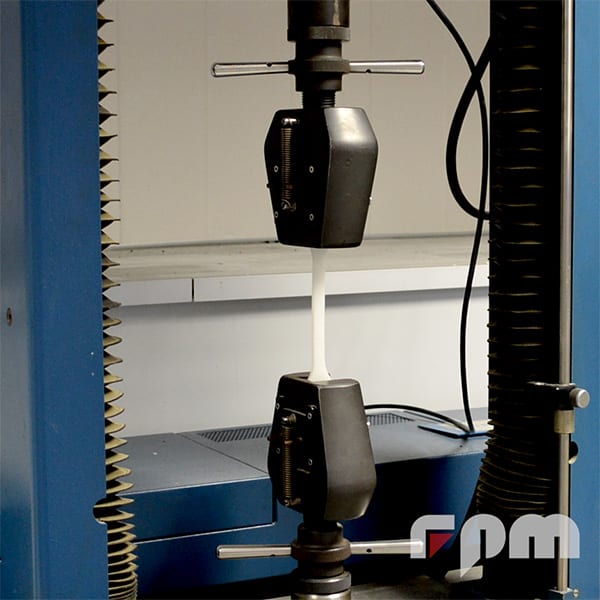
Tensile strength testing of EPU 41 at specific thicknesses to inform product design
The most common testing that rpm is providing is standard mechanical performance response testing to attempt to match the profiles of existing materials (or material sets). Their customers then usually take over the lifetime testing of parts for long-term reliability of the material within the design or chemical compatibility. The exact requirements are also usually unique to each customer. But the most important tests are user testing. rpm strives to quickly reach a geometry that can be tested by real users.
Carbon’s Design Engine recently added its Lattice Search feature, which allows rpm and their customers to compare the stress between different lattice types, cell size, strut diameter, volume fraction, and performance metrics to help figure out how much the final part will weigh. This helps reduce the number of iterations that need to be printed, particularly when replacing a known foam.
11. Optimize your part for production
The last stage is optimizing the part, lattice, and process for production. This is an underrated but extremely important stage that should at least be considered, even in the early phases of a project. A good design minimizes packing density, optimizes the placement of supports, anticipates fits with other components, and ensures success when printing the final design. When these factors are all considered, you have a reliable, repeatable production stream for a competitive cost.
In terms of product development, the biggest challenge is communicating in the lattice design language with customers who don’t know how to define or communicate the project goals. Very often, the project needs physical objects, both an existing product and sample lattices, so that the project goals are clear. When rpm approached lattices as a plug-and-play solution, they found that there were often misunderstandings from request to the final product. But now they speak in reference numbers and percentages and have become much faster and more accurate in achieving the requested products. In a nutshell, it is all about creating awareness and a common understanding to achieve the optimum solution together with the customer.
“Lattice use is still uncharted territory for most product designers and most additive engineers. The challenges for series production only multiply the problem and require a cross-disciplinary approach from the optics of design to the minute details of cleaning and support placement. That is why it is key to have partners like rpm and Carbon who understand the unique requirements of both series production and lattice execution. But the results continue to open the landscape of real-world applications, improving the world around us.”
Brian Crotty Business Development and Key Account Manager – rpm rapid product manufacturing GmbH
3D as It’s Meant to Be
Interested in utilizing Carbon to accelerate product development? Reach out to us at sales@carbon3d.com to learn more!
